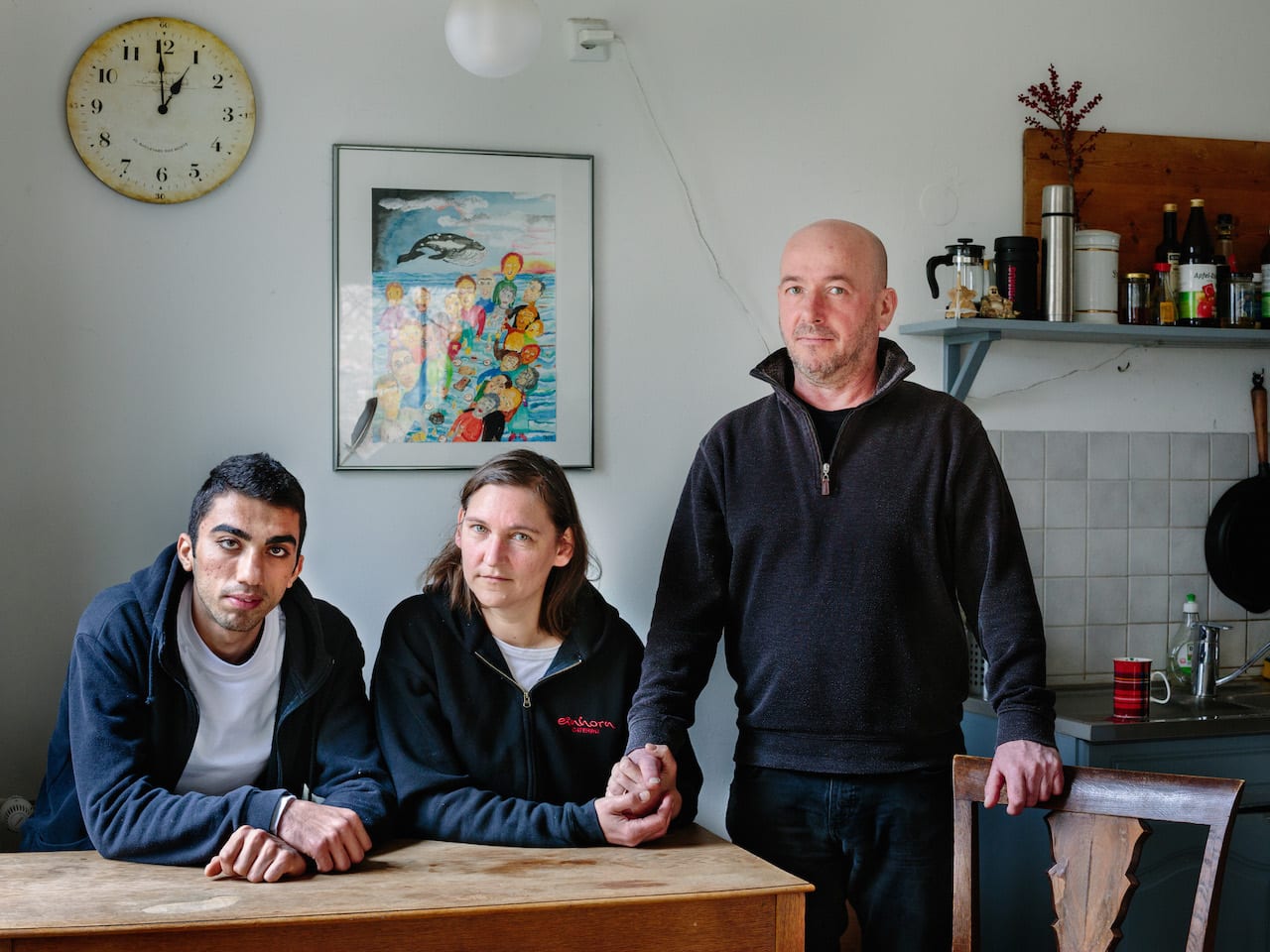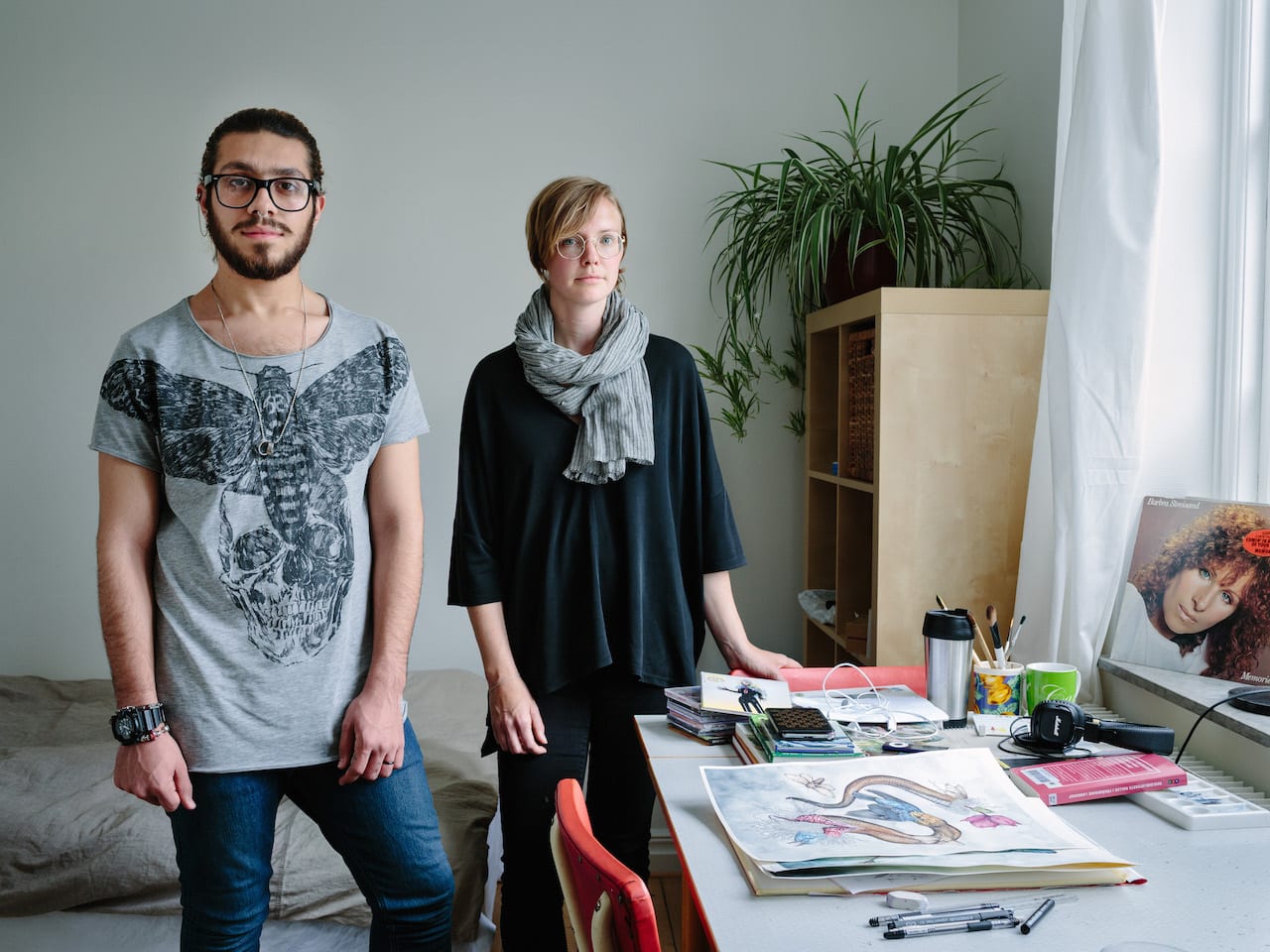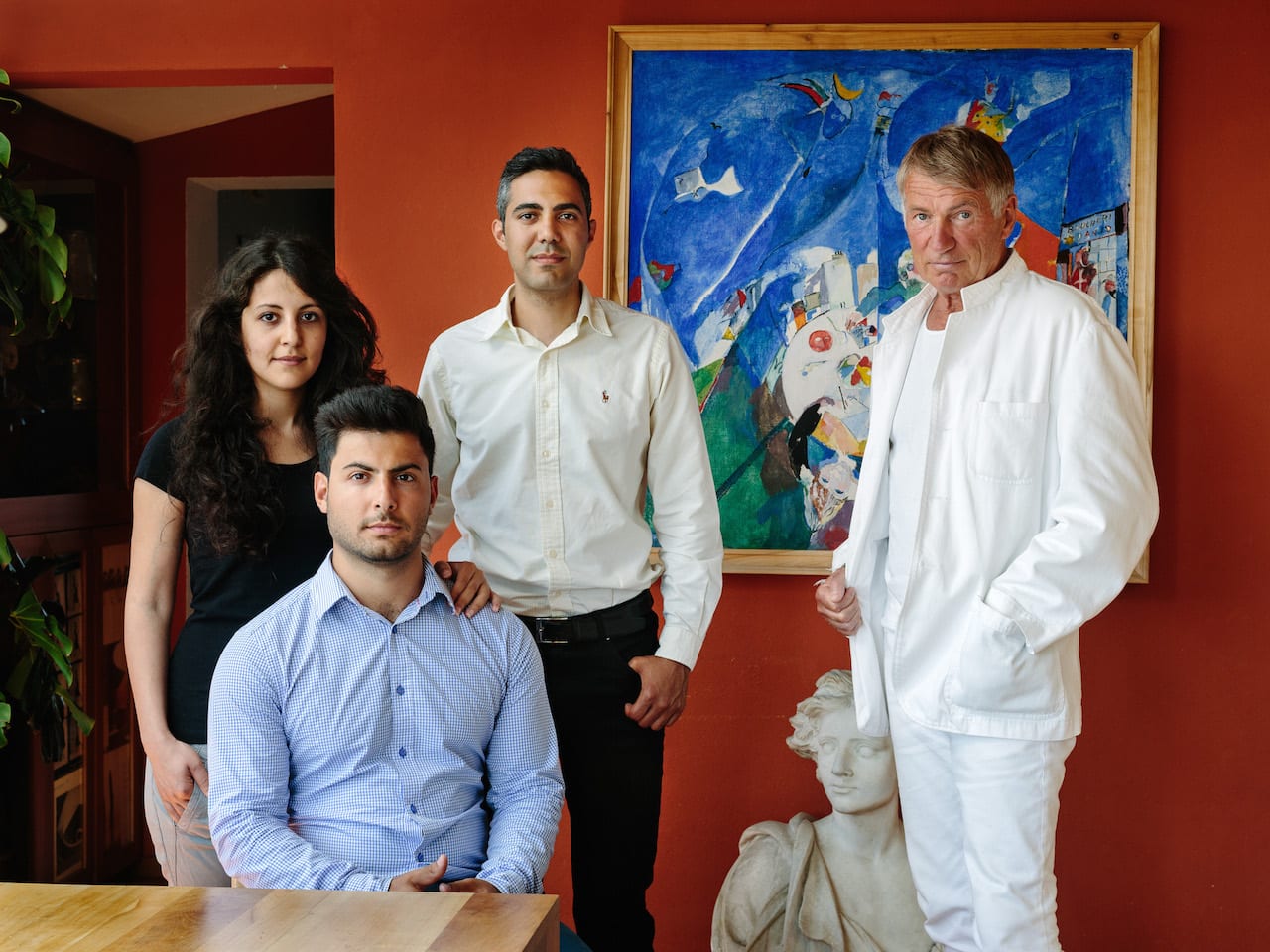In September of last year, the city of Berlin opened its doors to thousands of refugees from Syria, Afghanistan and Iraq, who had fled their war-torn countries in a desperate search for a new life. Registration centres that were set up to deal with less than half a dozen applicants a month, were overwhelmed by hundreds of families every day. At 10pm, when the centres closed, buses arrived to take the un-registered refugees to emergency accommodation – a gym, or community hall perhaps. Once those were full, the migrants with little more than the clothes on their backs, were left out on the streets until the centre opened its doors again in the morning.
It was these images of overcrowding, and these reports of crisis that inundated the news headlines. Less talked about were the stories of the families that took these refugees, strangers from another country who did not speak their language, into their homes. Documentary photographer Aubrey Wade and partner Sarah Bottcher, were two of these volunteers who temporarily hosted a pair of young Afghan men at their new flat.
“We felt incredibly moved and wanted to do something to respond,” says Wade. “There was an incredible grassroots response to what was happening there. But it’s a big commitment, and highlighted my feeling that documenting this and these families was a really valuable thing to do.”
Wade began working on a project that would soon take him into the homes of other host families in Germany. The photographer, who had just moved to Berlin from London, spent a year visiting the homes families and flatmates who had taken in one or more refugees. No Stranger Place is a series of portraits, that places all the members of the host family alongside their adopted ones, hoping “to provide a way into the story”. In some of the images it is not so obvious to distinguish between the two, dissolving the perception of ‘the outsider’. Perhaps even encourage people to do the same.
Wade explains: “I want to try to understand the experience that the people in my photographs are having, and photograph it in such a way to provide the bridge to connect. The refugee story that was unfolding last year was really impersonal, but the people in these photographs chose to respond out of trust and openness to the process. By doing so, they quickly turned people who might have been the other or stranger, into familiar.”
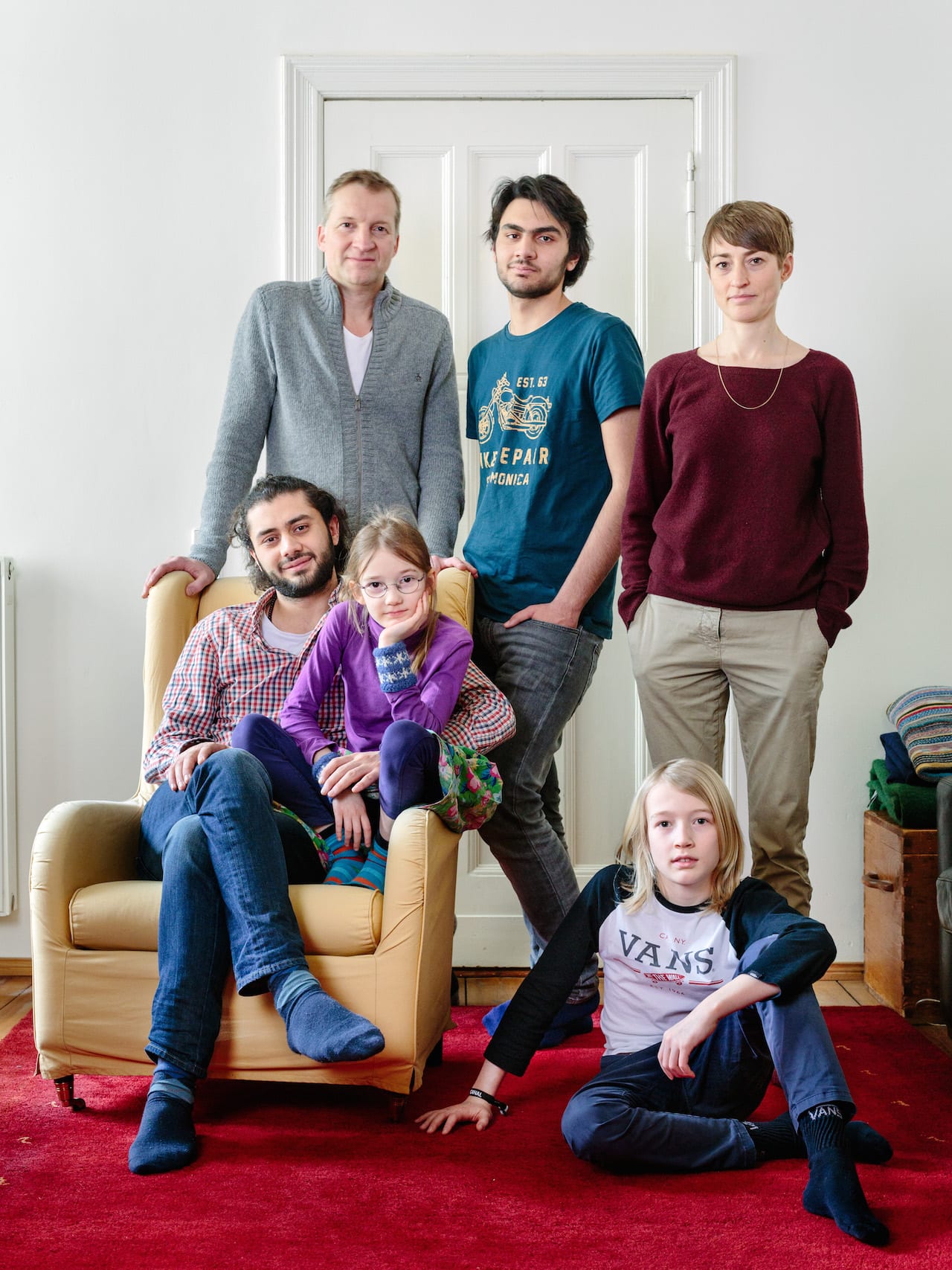
Suzy Hopper, the picture editor at the UN Refugee Agency, was immediately taken by the project. Six months after its initial conception, it was picked up by the UNHCR, and, with a shared vision to champion human compassion and erase the widespread aversion to the unknown that many Europeans felt towards the refugees, the charity and Wade began to work together.
“I saw it and I just couldn’t believe it,” says Hopper of Wade’s first pitch of Berliner portraits. “It was made for UNHCR – it’s highlighting everything that we need to highlight.”
The project took flight, expanding to Austria and Sweden; two of the top countries where families took in refugees. Whereas in Germany and Sweden Wade’s research was largely independent, finding subjects through Facebook and internet forums, the partnership proved instrumental for introductions in Austria. The central European country, which initially boasted a positive and open policy in welcoming refugees (in August 2015 alone they registered over 100,000 new arrivals), began to change its attitude with the added concern over political stability.
Earlier this year, Austria passed a new law, which allows its government to declare a ‘state of emergency’ if the numbers of refugees suddenly spike, and thus automatically refuse all migrants at the border. As the situation became more desperate, the easier solution was to look the other way. The UNHCR, however, had already developed a strong contact list, which Wade was able to access.
The project pushed forward. The UNHCR was on hand with project management support and boosted outreach to new media platforms. With a growing team, including a new writer Nadine Alfa, No Stranger Place also began to take on a multidimensional identity. Most notably, short documentaries, which can be viewed on the project website, were created by Leslie Knox and her team at Tiger Nest Films.
“With all of these projects I’m interested in partnerships and working with people who share your vision and emotional response to the world,” says Wade. “It’s important to find vehicles with which we can connect the ideas that are embedded into the work to different audiences, whether that is with social media, online or print. It creates a balance.”
He adds: “Our ambitions for the project are to keep connecting it to people. We’re developing stage two which is to develop exhibitions and outreach material and so on.”
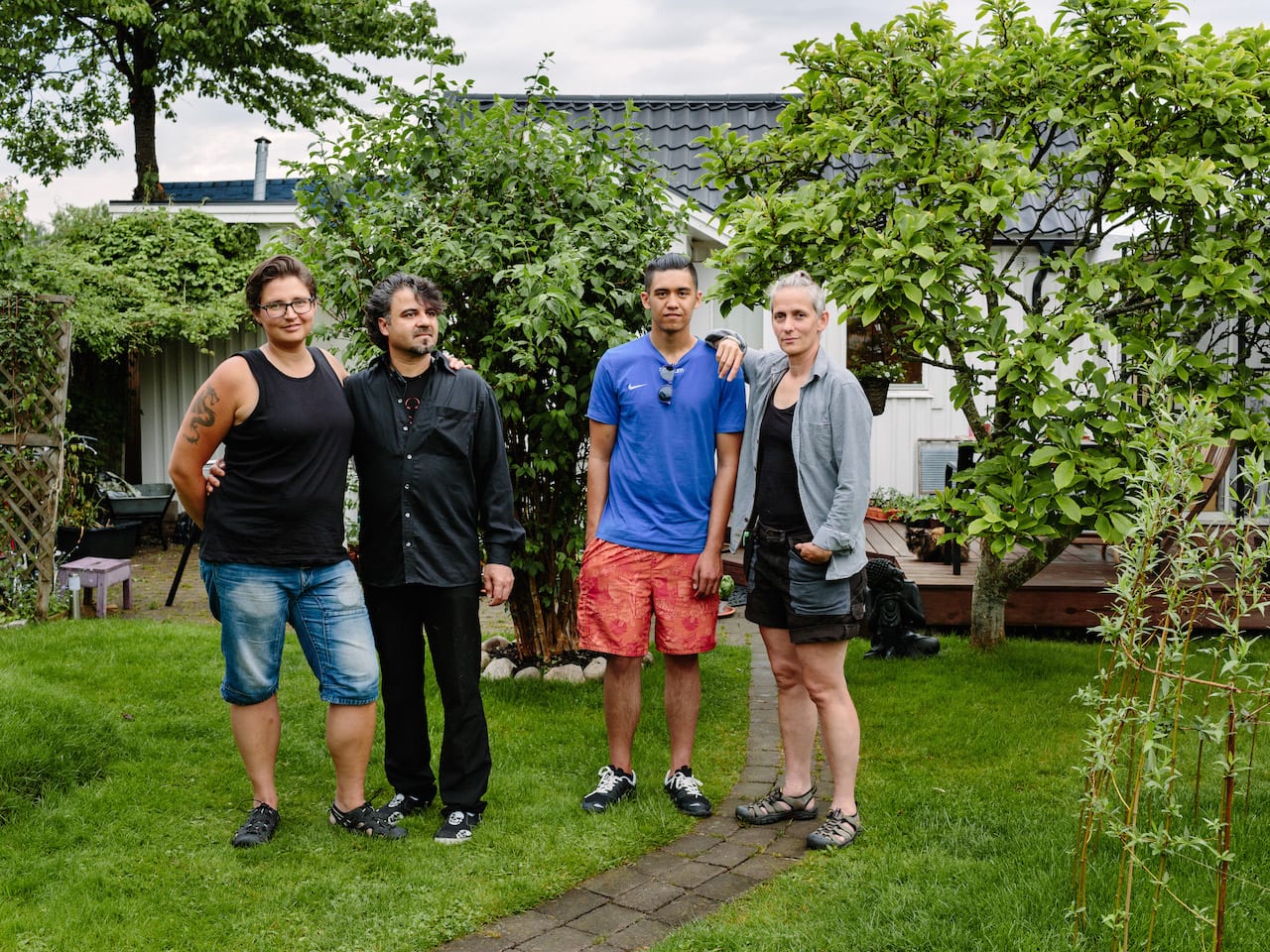
With this added support from the refugee agency, Wade and his team revisited two of the families and filmed short interviews and sequences that offered an insight into their daily lives. Clips from these intimate narrations were quickly picked up by international media outlets and featured in reports by The Guardian, Zeit in Germany and Hala Gorani’s news show on CNN.
Suddenly the story of Waleed Lababdi and his wife Farah Hilal and her brother Milad, who fled Syria in 2012 but now live in Malmo, Sweden with architect Lars Asklund, was splashed across television screens. Together with the seemingly unremarkable portraits, refugees became ‘normal’.
“It really humanises these refugees who have been spoken about so negatively. You see that they’re just people,” says Hopper.
“You realise the labels used to describe people,” adds Wade. “On a human level they very quickly stop making sense. How many times do you have to invite your ‘refugee friend’ for dinner before they just become your friends?”
It comes as no surprise that refugees that are taken in by locals have a greater chance of integrating into the community. Many of the families featured in the series are helping their new housemates with language lessons, creating new relationships and looking for a job. Although there is a hopeful undertone to the project calling out to potential host families to take that step – there are links to refugee centres and networks on the website for those who are inspired to get involved – Wade intends for it to be considered in a broader sense too.
“I think integration is for us to go out and meet people halfway,” he says. “I would like people to think about whether they could reach out and connect with the new arrivals in a different way. To form relationships with each other because that’s what makes the experience of integration a positive one on both sides, or a negative one if they choose not to.”
Hopper agrees that the series is not strictly a campaign. Rather, it is an effort to recognise the acts of generosity and change in lifestyle of those involved. The picture editor, for example, was particularly moved by the Jewish Jellinek family who make sure to buy Halal meat for their Friday Shabbat dinners so that Kinan, a Syrian Muslim, is included too.
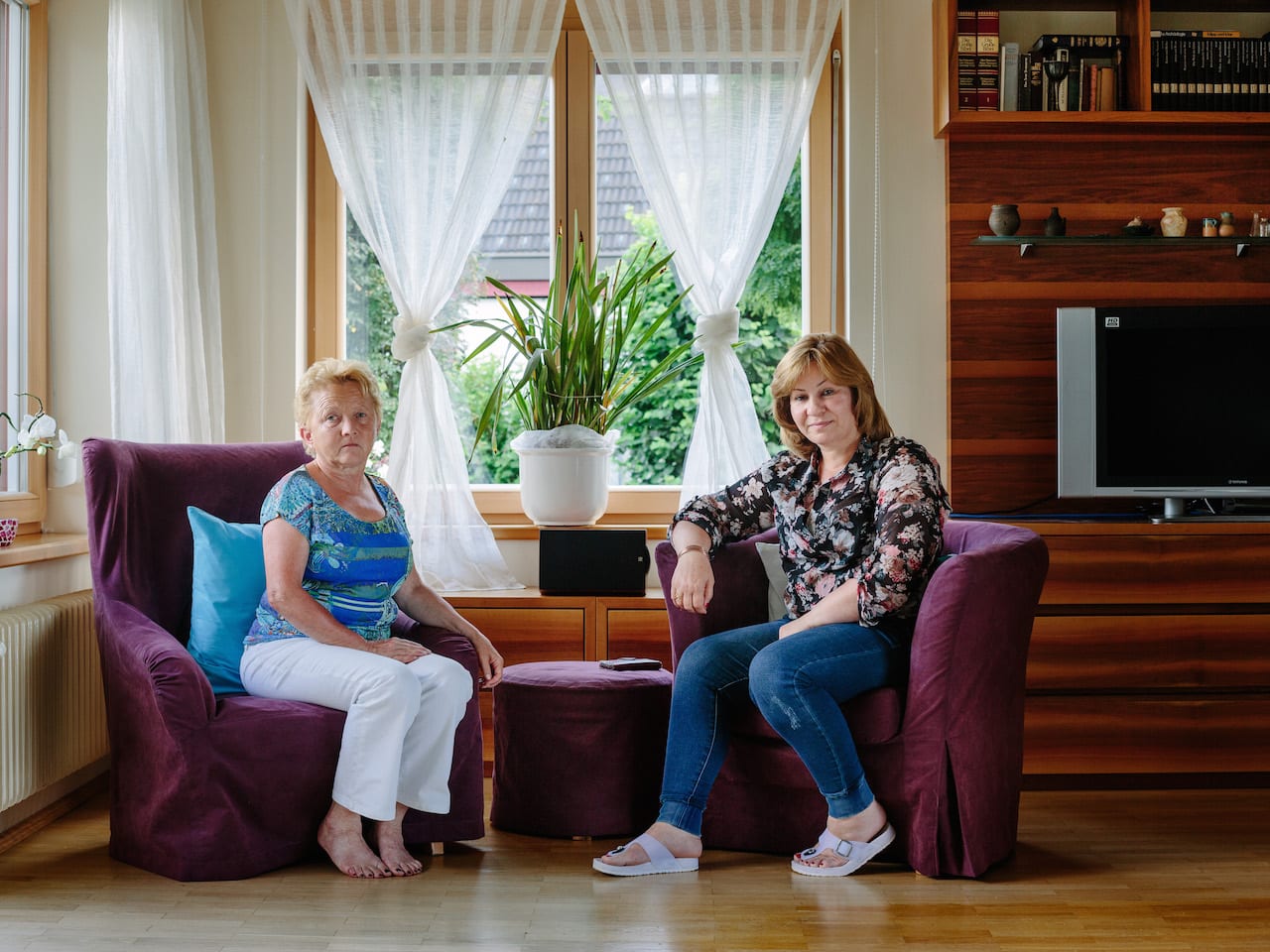
In Berlin, 44-year-old Red Cross worker Uta hosts Hamid from Afghanistan, but has had to abandon old friendship circles who did not accept this decision. Wade also recalls how Edgar, another Berliner who lives with his wife Amelie and two children aged 10 and 12, told him that his children have had an invaluable experience and education through living with 27-year-old Bilal from Syria, and his younger brother Amr.
The portrait series is complete, but Wade is now looking to elaborate the stories and take the project long-term. He hopes to return to the families he has met, and explore how their relationships have developed, how they have integrated and where they might have moved to.
“Will someone get married, will they have kids? I’m curious and continue to explore,” he says.
The use of photography to tell stories keen to be communicated by agencies such as the UNHCR, particularly with regard to the refugee crisis. As No Stranger Place builds on momentum, Hopper also sees the potential in its future.
“In terms of phase two, I think we are going to have to link it to advocacy,” says Hopper. “We can use it to do something for the refugees. This project has a long life and everyone can relate to it.
“Photography absolutely has the power to change minds and attitudes. We want the best photographers to do justice to the stories of people who have in a lot of cases, survived incredible circumstances.”
https://nostrangerplace.org/ This article was first published in the Community Issue of BJP, issue number 7853, November 2016
